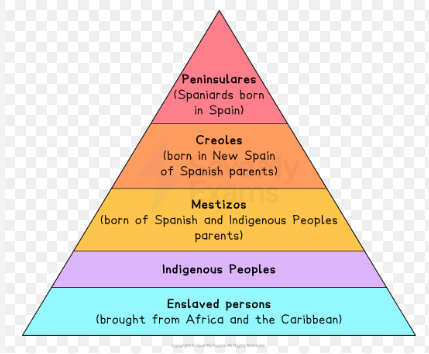Labor, slavery, and caste in the Spanish colonial system
1/5
There's no tags or description
Looks like no tags are added yet.
Name | Mastery | Learn | Test | Matching | Spaced |
|---|
No study sessions yet.
6 Terms
Hernan Cortes
Landed in Tenochitlan in 1519. He encountered the Aztecs and loved their gold so he took Moctezuma hostage, but the natives retaliated. Hernan fled but came back with enemy natives of the Aztecs taking over the capital Tenochitlan 1521 and renaming it Mexico City. Things were fine in the beginning as natives like their canons+horses and the Europeans liked their gifts.
Francisco Pizarro
He had expeditions of the Panama but in the 1520s made the attempt to capture the Inca empire(he failed). He captured the Inca empire in 1532. He founded Lima, Peru in 1533.
Encomienda System
Land was granted to encomenderos(people given the right to exploit the labor of natives) in exchange they pay taxes to the crown and Christianize the natives. In thee Carribean it was for sugar and on mainland Mexico it was for mining.
Mita System
Incan system that the Spanish adopted and used in South American that required villages to provide laborers for the mines.
Caste System
Status was based on the amount of Spanish blood in the person prevalent in colonial Spanish America

Bartolomé de las Casas
A Spanish priest and missionary who is notable for advocating for the rights of Native Americans. His writings and actions influenced debates about Spanish colonial policies and the treatment of indigenous peoples.